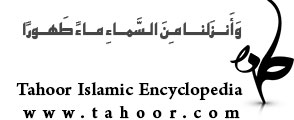
Partaw Namah -Treatise on illumination-
A. Partaw Namah (Treatise on illumination)
This works was written in Farsi and encompasses a complete survey of major philosophical issues beginning with subjects as time, space, and motion and offers an argument which is strikingly similar to Descartes “Cogito” or Ibn Sina’s “ suspended man.”
Surhrawardi‘s philosophical views in Partaw namah are generally analogous to those of Ibn Sina. Having argued for the existence of the Necessary Being and the hierarchical structure of existence and the relationship between ontology and the moral worth of beings, Surhrawardi goes on to discuss the problem of evil, free will and determinism within an ishraqi context.
Since the Necessary Being is pure Goodness and its nature is the most complete and most intelligent fall all beings, therefore, from Him emanates only pure benevolence. If there occurs evil its good exceeds its evil.
Surhrawardi argues for the immortality of the such, pleasure and pain, and their relationship with the state of the soul after it departs the body. Finally, Partaw-namah deals with prophets and prophecy, miracles and events of an unusual nature. This section is written in the style of his ishraqi writings and is different from the other chapters in that he makes extensive use of Zoroastrian symbolism.
B. Hayakil Al- Nur (Luminous bodies)
This is one of his most important and well known treatises in Persian. Some of Surhrawardi ‘s commentators have suggested that extensive use of word haykal is an indication that Surhrawardi may have been influenced by Isma’ilis.
In the first section of Hayakil al- nur, he offers a definition of what an object is. In the second chapter he discusses the mind- body problem, their interaction and the nature of “I”, which is distinct from the body. He also pays attention to the problem of “ personal identity” and argues as to what it is that constitutes the identity of a person. In the third chapter he discusses different concepts of Being such as necessary and contingent. It is in the fourth chapter, however, that Surhrawardi’s philosophical views are discussed with a much greater depth and length.
He then goes on to discuss the problem of eternity (qidam) and the creation (huduth) of the world in time and God’s relation to it. Also, he investigates the relationship between the movement of the celestial bodies, the qualities he attributes to them, and the process of illumination. In the later part of Hayakil al-nur, he investigates such issues as the immortality of the soul and its unification with the angelic world after it departs the human body.
C. Al wah Imadi (tablet of Imas Al- Din)
In the introduction to this work Surhrawardi indicates that this book has been written in the style of the ishraqis. He begins, however, by a discussion on semantics and then moves on to consider such issues as the soul, its powers and its relationship with the of light of lights. The first the book discusses a number of philosophical issues a such as the Necessary Being its attributes, the problem of createdness and etemity of the world and motion. In so doing, he makes extensive references to Quranic verses and Hadith. In the later part of the book Surhrawardi is engaged in an exegesis of the ancient Persian mythology and makes interpretations that are essential in the formulation of his theosophical epistemology. This is especially apparent towards the end of this work where the fate of the human soul is discussed in such a way that the similarity of Islamic eschatology and Zoroastrianism is demonstrated. Surhrawardi here argues that purification through asceticism is the necessary condition for illumination. As he states: “Once the soul is purified, it will be illuminated by divine light.
Surhrawardi then tells us that asceticism and purification are like fire which, once applied to iron, illuminates the iron. The iron, in this case, being the soul or the “I,” can become illuminated not only because of the dominant character of the light of lights but also because of the inner yearning of the human soul for perfection. The light that functions are the illuminator of the body and the soul for Surhrawardi is the incorporeal light which he calls Kharrah. It is the presence of this light in the human soul that enables man to have the inner yearning which is necessary for the pursuit of spiritual path. Surhrawardi describes the human soul as a tree whose fruit is certainty, or a niche that, through divine fire, becomes illuminated. In his writings Surhrawardi sees the encounter of Moses and the burning bush in this context and uses the story to substantiate his ishraqi claim that is only the divine fire that can illuminate the human soul. Surhrawardi tells us that the reason for writing this book is to exposé the “origin” and destination of man. He describes the origin as:
The principles which are necessarily the case with regard to the knowledge of the origin of man’s nature, are of eschatological nature. This is in accordance with the creed of the theosophists and the principles ( laid down by) the learned men of theosophy.
At the end Surhrawardi offers an esoteric reading of a story by Firdawsi, the Persian poet whose monumental work, The Book of Kings, is an encyclopedia of Persian mythology. A compete discussion of Surhrawardi’s reading of such figures as Faridun, Zahhak and kay Khusruw is such that he see them as the manifestations of divine light. On the significance of this work, S.H. Nasr states:
Alwah imadi is one most brilliant works of Surhrawardi which the tales of ancient Persia and the wisdom of gnosis of antiquity in the context of the esoteric meaning of the Quran have been synthesized. Surhrawardi has made an interpretation of the destiny of the soul which Islamic theosophy and gnosis are in agreement with.
Sources :
suhrawardi and illumination school